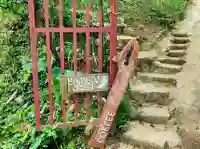

Image Missing
sapa
Getting to know...
We start in the morning from the comfort of Ta Van, heading towards the bamboo forest. This trek is best undertaken in good daylight and is therefore a morning-only activity. Although there are a few signposts guiding us, we quickly begin our ascent up the hillside, and the surroundings soon feel incredibly remote. We pass a few homes of local farming families, and it’s remarkable how they manage to navigate motorbikes up here while we climb the steep hillside—it seems almost miraculous.
To access the bamboo forest, we must first cross some rice terraces by walking along the tops of the earthen walls. For the inexperienced, crossing can be challenging as the walls are quite narrow. Utilizing a handy bamboo walking stick, readily found lying around, makes the crossing much easier since there’s nothing else to hold onto. It’s important to keep moving, as the earthen walls can collapse if too much weight is placed in one area. Fortunately, we don’t have many terraces to cross, and soon we reach the edge of the forest.
In the forest
At the forest’s edge, there’s an abrupt transition—within just a few meters of entering, the bamboo becomes so dense that visibility extends only about 20-50 metres. The hillside on which the forest is situated has a steep grade, possibly exceeding 30%. For experienced trekkers, the forest offers much to explore and the access is no problem; less experienced trekkers might need a few minutes to adjust, learning to discern where others have stepped and following suit. The trails we use are not typical tourist paths but are instead trails carved by locals to enable sustainable bamboo harvesting.
The bamboo forest was once much larger, actually reaching down past lower Ta Van - but with more people in the village now and people moving further away from the centre so they can continue farming, it is smaller in size which is why today it is protected.
We climb and climb, being cautious not to touch the smaller bamboo shoots too much as they sprout tiny needles while growing rapidly—a useful pointer indeed. As we ascend the valley, we can hear water trickling down, and during the rainy season, there’s sometimes a small waterfall can be see against the rocks.
There is an abundance of wildlife here, though thankfully nothing that poses a a worry. If you visit in May, you might be lucky enough to see the golden butterflies. The forest is home to many birds and squirrels which we will definitely hear and hopefully be fortunate enough to see.
As we trek, the path branches off in several directions. These are the routes locals use to access different parts of the forest for bamboo harvesting. It is crucial that we take the correct one to avoid dead ends. Fortunately, as your guide, I know which path to choose.
The bamboo grows thick around us, blocking any view beyond the forest. We can only still only see 20-50 metres ahead due to the density of the forest. W hear the soothing rustle of bamboo in the wind, as we are exposed high on on the hillside. We are completely immersed in nature. We cross a couple of small streams, hopping from rock to rock to keep our feet dry. The trail continues to wind through the forest, twisting and turning along paths cut for easier access.
The forest top
Eventually, after 1.5 hours of rigorous trekking, we emerge into a clearing where the forest abruptly ends as quickly as it began. Here, we are greeted with a fantastic view of the valley below, having ascended over 250 metres. We continue upwards, encountering a dirt road only suitable for motorbikes and trekkers. Despite this steep gradient, it’s surprising to find rice terraces at this altitude and level of remoteness. This spot offers some of the best viewpoints of the entire trek, so it’s best to pause here for a few moments to soak in the experience and take some photos.
Surprisingly, we find ourselves still within Ta Van area at the summit. Ta Van is not just the small village at the bottom but extends over a wider area. There is still another 100 metres above us, but it is inaccessible and offers no viewpoints as it is thickly forested, so we begin our descent back. As we descend, we see the homes of the Red Dao in the village of Giang Ta Chai. We find a very steep road that leads us there, so care must be taken even though it is paved. Along the way, we enjoy many splendid views of the valley below where we can see many rice terraces from different families and even some houses.
As we descend further, signs of civilisation reappear with the occasional house dotting the landscape. Everything seems so remote and inaccessible as we carefully make our way down the steep terrain. We start seeing some homestays along our path; their remote locations make you wonder how people manage to reach them with luggage. As we descend further, we abruptly find ourselves back in Ta Van village, marking the end of our trek.